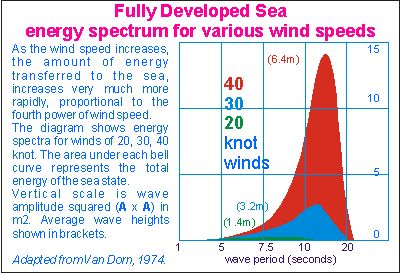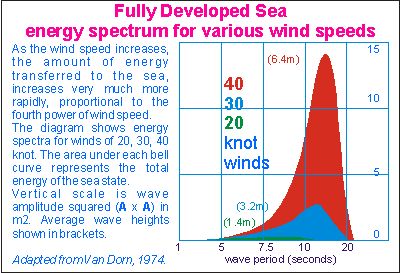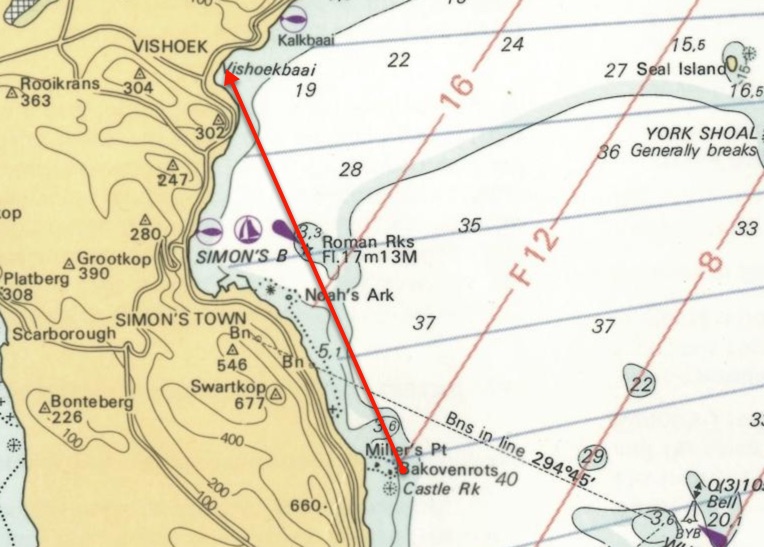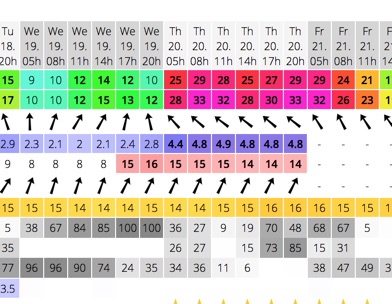- Posts: 524
- Thank you received: 42
Buoyancy with a punctured hull
- SpaceSputnik
- Topic Author
- Offline
- Platinum Member
Are the hulls typically one big empty space or sectioned with bulkheads?
I know my V7 has two bulkheads around the hatch area at the back but it's not your typical layout.
How is it on proper composite boats such as V8 or V10?
Please Log in or Create an account to join the conversation.
But as a general rule, most skis will still float quite well when full of water, although not enough to paddle them.
Please Log in or Create an account to join the conversation.
- [email protected]
-

- Offline
- Admin
- Posts: 1833
- Thank you received: 409
Generally, even skis that have buoyancy, don't have enough that you can still sit on them and paddle them if the hull is flooded.
In calm weather they might be semi-useful to increase your visibility if someone's looking for you, but they basically become a waterlogged hulk low in the water.
We've had a couple of incidents here in Cape Town including:
- (years ago) a ski having its tail bitten off by an inquisitive animal. With his ski waterlogged, the paddler on that occasion had to swim 100m to shore, knowing that said animal was in the water with him...! (Irritated no doubt by having fibreglass stuck in its teeth too!)
- A paddler was on a Miller's Run in really big conditions - nose-dived into a big mineshaft and the pressures caused the hull to pop. The boat instantly flooded and, the hull integrity gone, the nose quite quickly broke off leaving him in the water attached by his leash to the flooded rear half. It was a nasty one because although he was talking to the NSRI on his mobile, they couldn't spot him. They were eventually guided to him by a spotter on land looking through a telescope. (Click here for the story)
Rob
Currently Fenn Swordfish S, Epic V10 Double.
Previously: Think Evo II, Carbonology Zest, Fenn Swordfish, Epic V10, Fenn Elite, Red7 Surf70 Pro, Epic V10 Sport, Genius Blu, Kayak Centre Zeplin, Fenn Mako6, Custom Kayaks ICON, Brian's Kayaks Molokai, Brian's Kayaks Wedge and several others...
Please Log in or Create an account to join the conversation.
On the big downwinds, I have always felt a bit more comfortable paddling a ski with more buoyancy and less tendency to nose dive.
I recently did some serious damage to my XT goofing about in the surf zone. I failed to properly access the wave action before paddling into a nice 3m bomb. Got spun around 180 degrees. Came down the face backwards and pitch poled. My feet were trapped in my foot straps as I was being drug toward the beach. Paddle was ripped from hands, luckily got it back and wasn't broken. When I finally got out of my straps and came up for air I wrapped my arms around the nose of my flattened/crushed ski as the next wall of water came at me. It was pointless as ski was ripped from my grasp. Got to the beach and recovered paddle and hat, Yeh! Then drained (lots of) water out of ski. So now I'm stuck needing to get back to the other side of the harbor through 3m surf with a severely wounded ski. I went for it not knowing if my ski would sink before I got back to the beach where I parked. Thankfully I made it, but, my ski must have weighed a around 45 kilos.
I'll get her up patched up and surfing again one of these days. It's interesting, somehow during this episode, I apparently, punched a hole in the back of the seat with my arse.
Rob, thanks for the much improved website with all the great new articles and input. Have always enjoyed your surfski reviews too.
Please Log in or Create an account to join the conversation.
I am not an oceanographer, but, from early on my curiosity has been focused on waves, the conditions producing them, how I might surf them, or, alternately, how they might trash me and my ski.
After looking at all sorts of wave physics and equations over the years, I came across the attached graph showing the total energy contained in various waves produced from various wind speeds. It basically shows the exponential increase in energy as the wind speed only increases linearly.
Over time, it seemed to me (mentally integrating numerous stories and trying to figure out the most likely conditions at the time), that damage to skis is most likely to occur when wind speed (with a full fetch) is around a sustained 30 knots or more (discounting the shore break where damage can occur with even a small dumping wave). So I began to use 30 knots as a limiter for me, especially as I get older.
In any case, I am not saying one shouldn’t go out in winds over 30; just to be aware of the massive increase in energy and thus the potential for ski damage.
[ also, in response to Fath2o’s post, I have done similar on some reef waves where I paddle – I was fortunate enough (and amazed) that my ski didn’t get busted. I know that feeling of being pulled along by your feet and wondering when it will be safe to take breath. I was kind of aware (i.e., in denial mode) of the risk going into it, but the allure of the waves is so druglike, I could not resist… ]
Please Log in or Create an account to join the conversation.
- [email protected]
-

- Offline
- Admin
- Posts: 1833
- Thank you received: 409
After looking at all sorts of wave physics and equations over the years, I came across the attached graph showing the total energy contained in various waves produced from various wind speeds. It basically shows the exponential increase in energy as the wind speed only increases linearly.
Sobering.
But how does the wave period figure into this? "with a full fetch" presumably means what I think of as "open ocean" where the wind has been blowing for hundreds of km.
Our Miller's Run for example rarely has what we call open ocean swell and the waves are mostly (again what we call) wind-generated chop with a relatively short fetch. So for us 25-30kt is not so scary and even 40kt is relatively handle-able.
But occasionally we get a SE swell coming straight into the bay with the SE wind and then things can get exciting... (Usually the open ocean swell runs from the SW and doesn't come into False Bay).
Rob
Currently Fenn Swordfish S, Epic V10 Double.
Previously: Think Evo II, Carbonology Zest, Fenn Swordfish, Epic V10, Fenn Elite, Red7 Surf70 Pro, Epic V10 Sport, Genius Blu, Kayak Centre Zeplin, Fenn Mako6, Custom Kayaks ICON, Brian's Kayaks Molokai, Brian's Kayaks Wedge and several others...
Please Log in or Create an account to join the conversation.
So any “protection” you have (short fetch, land, reefs, etc.) will cut the waves and energy down considerably.
There are some basic equations that can give a really good approximation of the waves for a given wind speed, period, fetch, etc. The depth of the water will also have a larger impact as the water shallows.
It gets more and more complicated the more variables one inputs. I find it all fascinating, especially that place in Nazare Portugal where it all conspires to give you a 100 foot wave. (Not tryin’ to surf that any time soon).
Please Log in or Create an account to join the conversation.
- [email protected]
-

- Offline
- Admin
- Posts: 1833
- Thank you received: 409
The depth of the water will also have a larger impact as the water shallows
Yep, we notice that too! And the effect of the proximity to shore.
One of the things I love about our Miller's Run is how conditions change over the course of it - even though it's so short (11.7km).
Until your post, I'd never thought about looking at a chart of the bay from the point of view of understanding what happens with the waves.
But when you do look at the chart, it seems fairly obvious to me what's going on.
The classic Miller's Run goes like this (with variations of course - it's never exactly the same):
- For the first couple of km: smaller, messier waves. This is usually where my slowest splits are.
- ...and then bigger, cleaner waves as you approach the lighthouse.
- Somewhat of a roller coaster ride past the lighthouse - where the ski bucks over the side-on waves reflected off the lighthouse and Roman Rock itself
- Generally cleaner waves for the next few km towards Fish Hoek
- Usually some great bumps as you cross the 15m shelf just outside Fish Hoek
- And finally, quite often there are fast running bumps near the rocks on the left hand edge of the bay (but you have to avoid the reef at Sunny Cove!)
And looking at the chart, it seems to make sense given the contours of the sea bottom.
Great stuff!
Rob
Currently Fenn Swordfish S, Epic V10 Double.
Previously: Think Evo II, Carbonology Zest, Fenn Swordfish, Epic V10, Fenn Elite, Red7 Surf70 Pro, Epic V10 Sport, Genius Blu, Kayak Centre Zeplin, Fenn Mako6, Custom Kayaks ICON, Brian's Kayaks Molokai, Brian's Kayaks Wedge and several others...
Please Log in or Create an account to join the conversation.
I find the same thing in the places I go. In fact, whenever I have done a particular run a few times, I will notice variations, as you say, that keep happening in the same spot. A check of a chart will make it fairly clear, and then one can plan to expect and utilize those differences on future runs.
Once you get to know a run, say the Miller’s, I suspect I could tell you the direction of the wind and the speed, and you could probably tell me, within a few percentage points, where your fastest laps will be, how fast they will be, and where and what you max speeds will be. For you racers, that “inside info” is priceless in planning your strategy.
Bill L
Please Log in or Create an account to join the conversation.
7-8 seconds here. We're talking some serious "Mineshafts"
Please Log in or Create an account to join the conversation.
- [email protected]
-

- Offline
- Admin
- Posts: 1833
- Thank you received: 409
another variable in the chart is the wave period.
...The wave intervals I see during big wind events are closer to 7-8 seconds here.
Interesting... Our normal wave intervals are around 9-10 seconds. But next Thursday the forecast is for some proper Miller's Run conditions:
The wind is great - 25-30kt SE, but that forecast of 4.9m swell at 15 seconds doesn't apply inside False Bay (it would be crazy if it did!)
Some energy does swing around Cape Point and into the bay, but it's not something we usually have to worry about. So we have an effective fetch of about 25km from Cape Point to the beach at Fish Hoek. The period of the wind swell? Not sure. But it's not like the monster waves on the Atlantic side.
I remember reading somewhere that the period of Tsunamis ranges from minutes up to an hour - which is why they're so very destructive.
Rob
Currently Fenn Swordfish S, Epic V10 Double.
Previously: Think Evo II, Carbonology Zest, Fenn Swordfish, Epic V10, Fenn Elite, Red7 Surf70 Pro, Epic V10 Sport, Genius Blu, Kayak Centre Zeplin, Fenn Mako6, Custom Kayaks ICON, Brian's Kayaks Molokai, Brian's Kayaks Wedge and several others...
Please Log in or Create an account to join the conversation.
- Jimi
- Visitor
woodshole.er.usgs.gov/project-pages/coas...s/fetch_limited.html
Please Log in or Create an account to join the conversation.
20 - 30 minutes. Swept all the navigation buoys away in the harbor. And, it lasted for three days! Of course I was out paddling when it came in. Whoohoo!
Please Log in or Create an account to join the conversation.
Latest Forum Topics
-
- Replacing rudder line Nelo
- 5 days 6 hours ago
-
- Puerto Rico
- 6 days 18 hours ago





